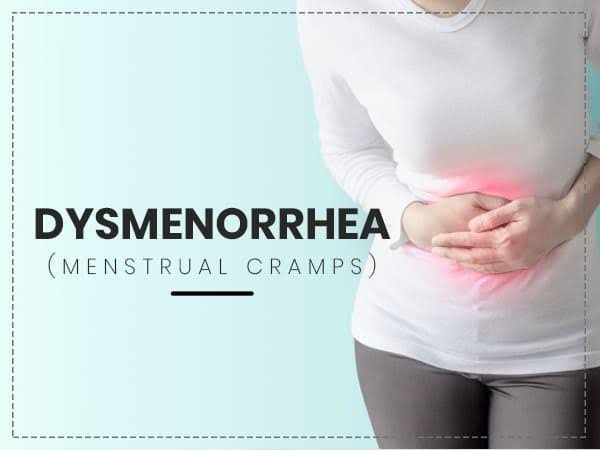
Definition : Dysmenorrhea literally means painful menstruation. But a more realistic and practical definition includes cases of painful menstruation of sufficient magnitude so as to incapacitate day-to-day activities.
Types
- Primary dysmenorrhea (pd) : pain in absence of any pelvic pathology
- Secondary dysmenorrhea (sd) : pain due to the presence of any underlying disease
Incidence : The incidence of primary dysmenorrhea of sufficient magnitude with incapacitation is about 15–20 percent. With the advent of oral contraceptives and non-steroidal anti-inflammatory drugs, there is marked relief of the symptom.
Causes of pain : The mechanism of initiation of uterine pain in primary dysmenorrhea is difficult to establish. But the following are too often related:
- Mostly confined to adolescents.
- Almost always confined to ovulatory cycles.
- The pain is usually cured following pregnancy and vaginal delivery.
- The pain is related to dysrhythmic uterine contractions and uterine hypoxia.
Mechanisms involved in pain :
- Psychosomatic factors of tension and anxiety during adolescence; lower the pain threshold.
- Dysperistalsis and hyperactivity of the uterine Junctional Zone are the important mechanisms of primary dysmenorrhea,
- Overactivity of the sympathetic nerves → hypertonicity of the circular fibers of the isthmus and internal os.
- Role of prostaglandins : In ovulatory cycles, under the action of progesterone, prostaglandins (PGF2 α, PGE2 ) are synthesized from the secretory endometrium. PGF2 α is a strong vasoconstrictor, which causes ischemia (angina) of the myometrium.
- Endothelins, leukotrienes and platelet activating factor are vasoconstrictors and causes myometrial contraction.
Clinical features :
- The pain begins a few hours before or just with the onset of menstruation.
- The severity of pain usually lasts for few hours, may extend to 24 hours but seldom persists beyond 48 hours.
- The pain is spasmodic and confined to lower abdomen; may radiate to the back and medial aspect of thighs.
- Systemic discomforts like nausea, vomiting, fatigue, diarrhea, headache and tachycardia may be associated.
- It may be accompanied by vasomotor changes causing pallor, cold sweats and occasional fainting.
- Abdominal or pelvic examination does not reveal any abnormal findings. For detection of any pelvic abnormalities, ultrasound is very useful and it is not invasive.
General Management of Dysmenorrhea:
Lifestyle Modification
- Low fat vegetarian diet
- Decreased consumption of foods like caffeine, salt and sugar
- Exercise – walking, swimming, running, bicycling, aerobic dance
- Smoking cessation
- Hot fomentation
- During menses, bowel should be kept empty; mild analgesics and antispasmodics may be prescribed.
Homeopathic Management :
- Magnesium phos : It is a great antispasmodic remedy. Menstrual colic, membranous dysmenorrhea, relieved by warm application and applying pressure.
- Belladona : It is effective when it feels like cramps or labor pain, may feel the pelvic organs will come out, there is a tension in genitals or abdomen. Sharp moments of pulsating pain with a sharp opening, the cramps get critical from touch.
- Chamomilla : Pain and cramping may come on after the woman has been angry. The menstrual flow can be heavy, and the blood may look dark or clotted. Pain often extends from the pelvic area into the thighs, and may be worse at night.
- Cimicifuga : Cramping and pain that get worse as the flow increases, back and neck pain with muscle tension, and sharp pains like shocks that shoot upward, down the thighs, or across the pelvis, are all indications for this remedy.
- Colocynth : This medicine is useful for the piercing pains in ovaries which may occur before the flow begins, painful cramps, it cures the restlessness when the pain decreases with heat effects and applying pressure on the belly. Episodes of stress or repressed anger often provoke the pain during periods.
- Cocculus : Dysmenorrhea with profuse dark menses. Too early menses, clotted with spasmodic colic. Painful pressing in uterine region, followed by haemorrhoids. Feeling worse from standing up or from any kind of exertion and feeling better from lying down and sleeping.
- Sabina : Menses profuse, bright. Uterine pain extend into thighs, pain extends from sacrum to pubis and from below upwards shooting up the vagina. Hemorrhage partly clotted, worse from least motion.
- Viburnum opulus : Spasmodic and membranous dysmenorrhea. Aching in sacrum and pubes, with pain in anterior muscles of thighs. Menses too late, scanty, lasting a few hours, offensive in odor with crampy pains.
- Xanthoxylum fraxineum : Neuralgic dysmenorrhea, with neuralgic headaches; pain in back and down legs. Menses thick, almost black, too early and painful.
About Author:
Dr. Shahana Khan, MD Scholar, Batch 2020-21, Department of Practice of Medicine, Government Homeopathic Medical College and Hospital, Bhopal, Madhya Pradesh.





